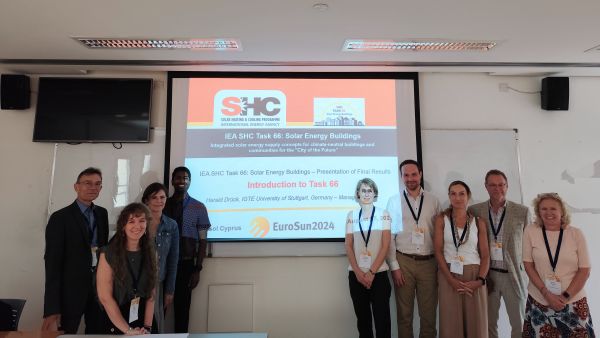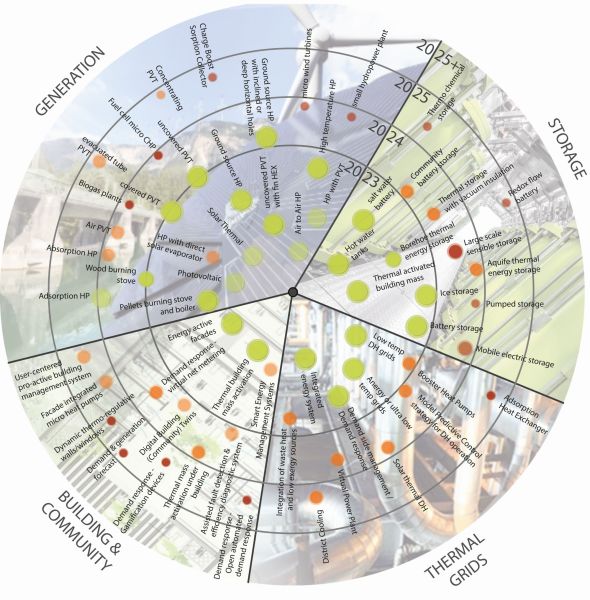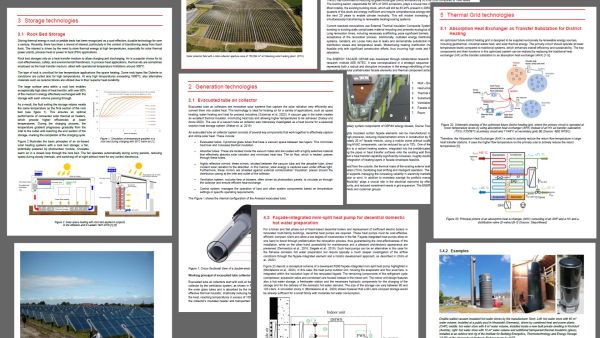IEA-SHC Task 66: SOLAR ENERGY BUILDINGS - Integrated solar energy supply concepts for climate-neutral buildings and communities for the "City of the Future”
Short Description
The IEA SHC Task 66 of the International Energy Agency (IEA) will develop relevant contributions on technology as well as on system level including the coupling of energy sectors in order to implement holistic renewable energy supply concepts for buildings and neighbourhoods with high ecological competitiveness in the future. The task focuses on increasing the cooperation in the development of integrated solar supply concepts for climate-neutral buildings of the "City of the Future" on an international level within the cooperation initiatives of the IEA.
The objective is to develop economic energy supply concepts for high solar fractions of at least 85% of the heating demand, 100% of the cooling demand and at least 60% of the electricity demand for households and e-mobility of multi-storey residential buildings and neighbourhoods, both for new buildings and for the comprehensive refurbishment of existing buildings. A central component of the concept development is the synergetic consideration of the interaction with grid infrastructures (electricity and heat) in the sense of bidirectional flexibility.
In recent years, numerous technological advances have been made in the fields of solar energy (thermal and electrical), other renewable energy technologies, as well as building services. As a result, both at the technology level and at the energy system level (e.g. through sector coupling), new approaches will be followed in this Task. These will be further developed, quantified, and scalability and transferability will be assessed.
The task gathers, analyses, and derives conclusions from case studies in different countries. It examines, categorises and evaluates tools that can be applied in the development process and addresses the need for further knowledge building.
Expected results are:
- Overview on various technology options and the available technology portfolio, taking into account existing and emerging technologies with the potential to be successfully applied within the context of this Task.
- Analysis, classification and evaluation of existing Solar Energy Building system solutions from technical, economic and ecological points of view.
- Identification of technological development gaps and creation of a technology portfolio.
- Development of integrated and grid-interactive energy supply concepts, with respect to the available area and the area efficiency of individual technologies for individual buildings and building blocks or quarters, both for new buildings and for the comprehensive refurbishment of existing buildings.
Project Images
Terms of use: The pictures listed underneath the header “Project Pictures” originate from the projects in the frame of the programmes City of Tomorrow, Building of Tomorrow and the IEA Research Cooperation. They may be used credited for non-commercial purposes under the Creative Commons License Attribution-NonCommercial (CC BY-NC).
Participants
Albania, Australia, Austria, Belgium, Denmark, Germany (Operating Agent), Norway, Switzerland
Contact Address
Project leader
DI Thomas Ramschak
AEE INTEC
Feldgasse 19, 8200 Gleisdorf
E-Mail: t.ramschak@aee.at
Projekt partner
Dr.-Ing. Fabian Ochs
Universität Innsbruck
Technikerstraße 13, 6020 Innsbruck
E-Mail: fabian.ochs@uibk.ac.at



